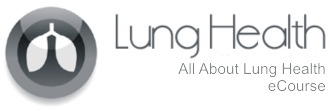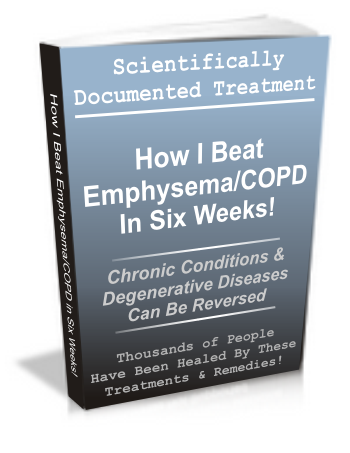
Lesson 8: COPD Treatments
Tragically, there is no cure for chronic bronchitis or emphysema, the two major types of COPD (Chronic Obstructive Pulmonary Disease). But there are a wide variety of symptom treatments that can ease discomfort and improve daily life.
Stop Smoking
The first rule of medicine is ‘do no harm’. The first rule of treating COPD for each patient is ‘do no MORE harm to oneself’. Therefore, stopping smoking is a must, if you smoke.
Even if smoking didn’t cause the disease, it will definitely contribute to any deterioration that takes place in this progressive condition. Smoking is one of the most common risk factors of COPD and an irritant of airways and alveoli. Damage to those two major components of the lungs are present in the condition.
Fortunately, for those without the willpower, there are several aids to stop smoking. Everything from Nicorette gum to nicotine patches are available as substitutes. Certain antidepressants, such as Bupropion, have been found to decrease cravings. Varenicline can help reduce withdrawal symptoms.
Drug Therapies
Though no drug restores bronchioles or alveoli health, nor slow their deterioration, there are several that can improve breathing and ease symptoms.
Corticosteroids
One of the oldest treatments for chronic bronchitis and emphysema are corticosteroids. Prednisone and prednisolone are still used in more serious cases and help about 20-30% of patients.
However, long-term use of corticosteroids have long been known to have serious side effects. Among them include: osteoporosis, increased risk of diabetes, high blood pressure, and excess weight gain. Administration by inhaler rather than pill carries fewer side effects.
As a result of these drawbacks, corticosteroids are sometimes recommended only for more advanced cases where other options have not shown adequate results.
Bronchodilators
Bronchodilators are one of the most common and helpful treatments for COPD today. They’re similar to the drugs used to treat asthma. They relax the muscles surrounding the airways and can be taken as a pill or via an inhaler. Some high-strength forms are even injected intravenously.
Inhalers tend to be preferred, since they produce the fewest side effects. One form in particular, MDIs (metered dose inhalers), use a pressurized container to optimize delivery of the drug to air passages. Some skill is required to use them properly, though, in order to prevent excess medication from being deposited on the tongue and throat.
Beta-agonists
Another class of asthma medications used to treat COPD are beta-agonists. They bind to targeted molecules of the airway muscles and help relax them to relieve constricted passages, making breathing easier. The effect is to relieve shortness of breath, a condition called dyspnea.
In some types, the effect begins within a few minutes and can easily last a few hours. There are types, such as Serevent and Foradil, that have a slower onset but last up to 12 hours. However, the effectiveness of beta-agonists tends to decrease over time.
Anti-cholinergic Drugs
Acetylcholine is a chemical released by nerve cells that affects nearby muscles. Its effect is to contract them, leading to reduced airflow. So-called anti-cholinergic drugs like Atrovent can counteract that. It is usually administered by an MDI device.
It helps relieve dyspnea, which makes it possible to engage in moderate exercise with less risk. Such exercises help maintain muscles, making them use oxygen more efficiently. That in turn eases the negative effects of COPD.
End of Lesson 8
To access the next lesson click its #/title in the right sidebar >>
The treatment Jim did is one of the world’s most scientifically demonstrated & documented alternative treatments. Healing successes by it have been documented thousands of times, even in mainstream medical journals, going back over 100 years. Yet, many doctors know little to nothing about it. This list of medical journals includes one of the most prominent, JAMA (The Journal of the American Medical Association).
This alternative & natural treatment Jim did is one of the most effective of all COPD treatments. No other mainstream treatments helped Jim and Anne with their COPD like this treatment. Anne’s doctor was angry at her for throwing her mainstream drugs for COPD in the trash. (See Anne’s e-mails on our ‘Testimonials’ page.)

 Are you ready to read Jim’s amazing full recovery story, the detailed natural program he did and thousands of others have done, and much more?
Are you ready to read Jim’s amazing full recovery story, the detailed natural program he did and thousands of others have done, and much more?
If you are, simply click on “BUY EBOOK NOW” at the top of this page. You can have your e-book downloaded to your computer and be reading it in only minutes from now!



